In this Decoded article for the next issue of Door Security + Safety Magazine, I answered several frequently asked questions that apply to electromagnetic locks.
~~~
This Decoded article will be published in Door Security + Safety
.


Electromagnetic locks installed in a means of egress must have the release methods specified in the adopted codes to help ensure life safety requirements are met.
Although the code requirements that typically apply to electromagnetic locks in a means of egress have been pretty stable for the past few editions of the model codes, questions still arise. This Decoded article will answer some of the frequently asked questions related to these applications.
If you’re not familiar with electromagnetic locks, they are a type of electrified lock that features an electromagnet in a housing mounted on the door frame, and a steel armature mounted on the door. When power is applied to the electromagnet, it bonds to the steel armature and locks the door.
These locks differ from other types of electrified and mechanical hardware, because without the release methods mandated by code, an electromagnetic lock would not allow egress. Other types of electrified locks – such as power bolts – could be used in the systems discussed in this article, but electromagnetic locks are by far the most common type of hardware for both of these special locking arrangements.
Which model code sections address doors with electromagnetic locks?
There are two code sections in each of the model codes addressing access control systems incorporating mag-locks. The difference between these two sections is that one requires a switch in the door-mounted hardware (typically panic hardware, a sensor bar, or a lever handle) to unlock the electromagnetic lock for egress. The other code section applies to locking systems with a sensor on the egress side to detect a building occupant approaching, which unlocks the door to allow the person to exit.
In the 2024 editions of the model codes, the applicable sections are:
IBC/IFC:
- 1010.2.10 – Door Hardware Release of Electrically Locked Egress Doors
- 1010.2.11 – Sensor Release of Electrically Locked Egress Doors
NFPA 101:
- 7.2.1.6.2 – Sensor-Release of Electrical Locking Systems
- 7.2.1.6.3 – Door Hardware Release of Electrically Locked Egress Door Assemblies
In other editions of the model codes, the section numbers and titles may vary from what is included in the 2024 edition.
Are there limitations on the use groups or occupancy classifications where mag-locks can be installed?
In previous editions of the model codes, there were some limitations on the types of facilities where electromagnetic locks were permitted. However, in recent editions of the I-Codes, the only use group where mag-locks may not be installed is in Group H – high hazard occupancies. With that said, a recent code change affects the use of mag-locks in assembly and educational occupancies.
Prior to the 2024 editions of the I-Codes, both sensor release and door hardware release applications for electromagnetic locks were permitted on doors required to have panic hardware. A change was made to the 2024 editions of the IBC and IFC that limits doors with panic hardware to the door hardware release application. The switch in the panic hardware must unlock the electromagnetic lock, and the sensor release options will no longer be permitted by the I-Codes on doors that are required to have panic hardware. These doors would typically serve assembly and educational occupancies where the calculated occupant load is 50 people or more.
In NFPA 101, Life Safety Code, there are no restrictions on the occupancy classifications where electromagnetic locks released by a switch in the door-mounted hardware are permitted. NFPA 101 allows sensor release mag-locks where permitted by the occupancy chapters (Chapters 11-43). There are limitations in the occupancy chapters for assembly and mercantile occupancies:
- Chapters 12 and 13, addressing new and existing assembly occupancies, state: Doors in the means of egress shall be permitted to be equipped with an approved access control system complying with 7.2.1.6.2, and such doors shall not be locked from the egress side when the assembly occupancy is occupied.
- Chapters 36 and 37, addressing new and existing mercantile occupancies, state: Sensor-release of electrical locking systems complying with 7.2.1.6.2 shall be permitted in buildings protected throughout by an approved, supervised fire detection system in accordance with Section 9.6 or an approved automatic sprinkler system in accordance with 9.7.1.1(1).
The other occupancy chapters specifically permit applications complying with Section 7.2.1.6.2 without limitations, except that this section is not specifically mentioned in Chapter 26 which applies to Lodging or Rooming Houses.
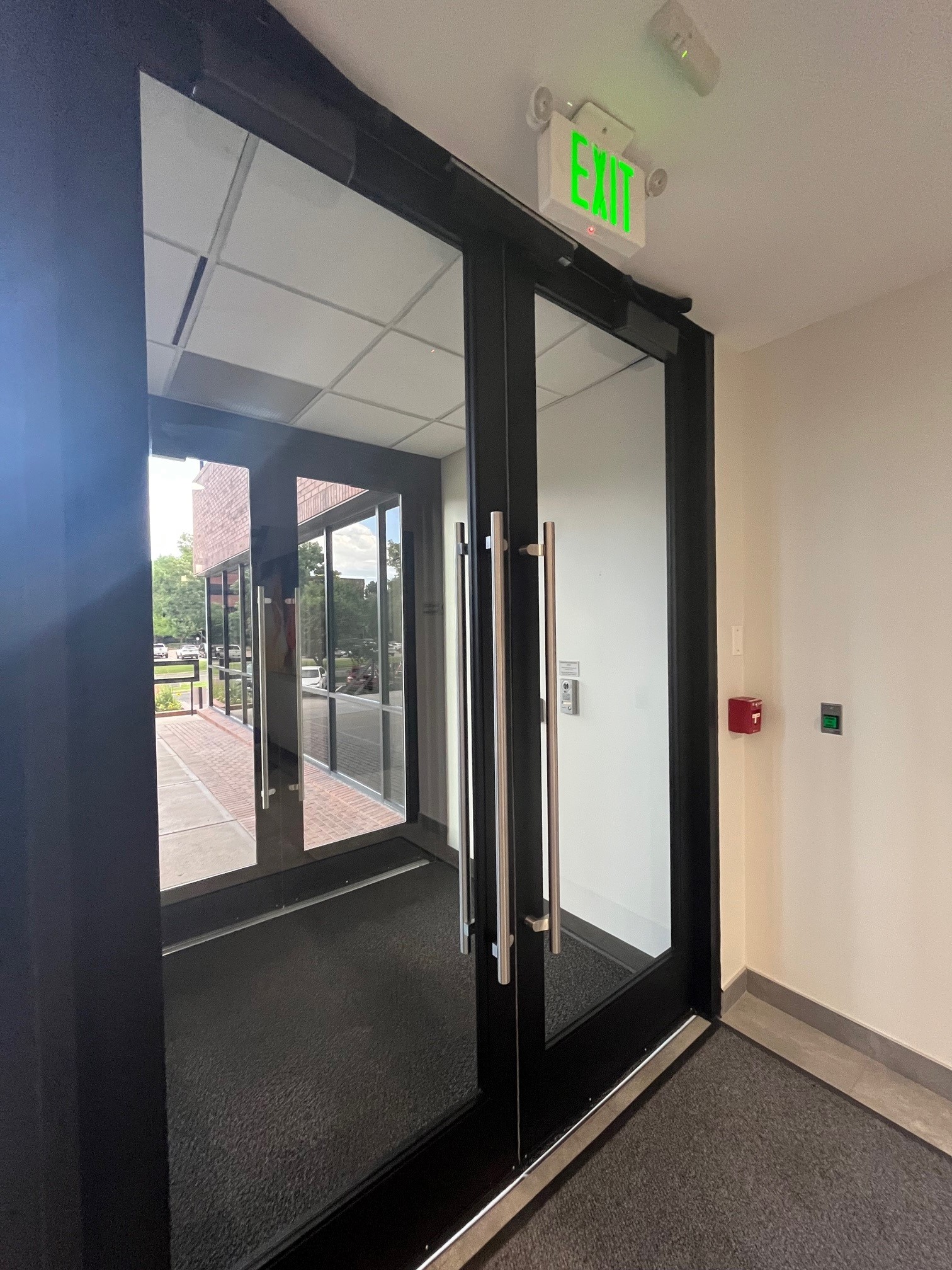
This entry door on an office building has electromagnetic locks mounted at the top of the door, a sensor near the exit sign, and an auxiliary push button on the wall.
Do both the sensor release and door hardware release sections require the auxiliary push button and fire alarm release?
The short answer is no – these release methods are not required for both types of systems. In addition to the sensor, the sensor release sections of the model codes state that the electrified lock must unlock upon loss of power and upon activation of the fire alarm system or sprinkler system (if present). In addition, mag-locks released by a sensor must unlock via an auxiliary switch/manual push button beside the door. The switch must be readily available and marked “Push to Exit”. When activated, it must result in a direct interruption of power to the electric lock, independent of the other electronics, and the lock must remain unlocked for at least 30 seconds. The model codes do not state which type of auxiliary switch is required; for example, the timer could be electronic, pneumatic, or another type.
In contrast, the sections addressing electrified locks released by a switch in the door-mounted hardware only require the hardware to be unlocked by the switch in the panic hardware, sensor bar, lever handle, or other hardware mounted on the door, and upon loss of power. The model code sections do not require the locks to be unlocked by fire alarm/sprinkler system activation, and no auxiliary push button is mandated by the model codes. It’s important to note that codes are a minimum and it would be acceptable to add these extra release methods; some local jurisdictions may require them.
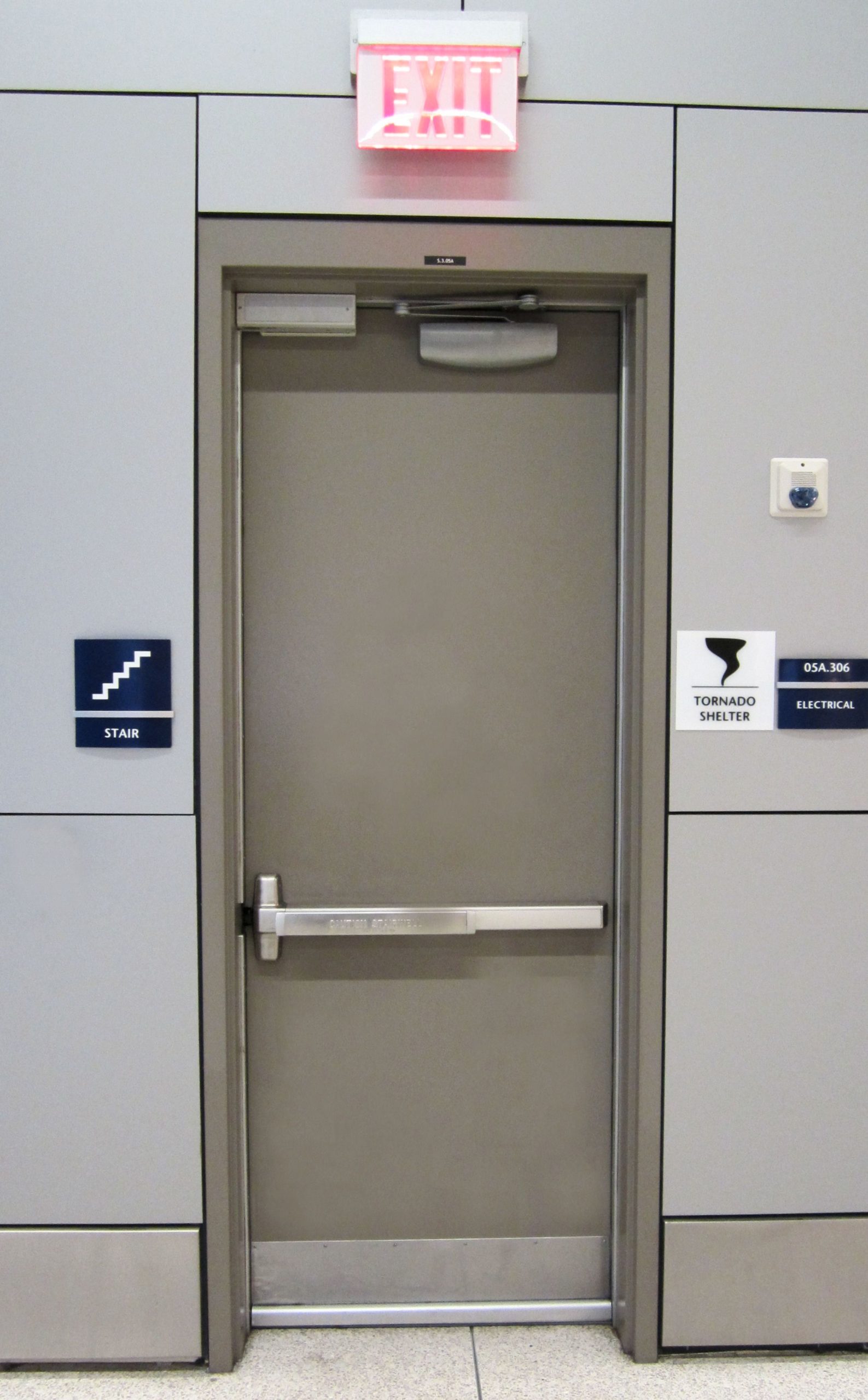
Beginning with the 2024 I-Codes, electromagnetic locks installed on doors required to have panic hardware must be released via a switch in the door mounted hardware. Sensor release mag-locks will no longer be permitted on doors required to have panic hardware.
Do electromagnetic locks require special listings if they are used in a means of egress?
Beginning with the 2009 editions, the model codes have required most special locking arrangements – including those that apply to mag-locks – to be listed to UL 294 – Standard for Safety for Access Control System Units. There has been a lot of confusion regarding which systems require the listing, and which specific components of the system need to be listed. This has been clarified in the 2024 model codes – both the I-Codes and the NFPA codes.
The 2024 editions of the model codes require certain types of systems to be listed but have allowed a second listing as an alternative: UL 1034 – Standard for Safety for Burglary-Resistant Electric Locking Mechanisms. The codes have been clarified to apply the listing requirement to the electrified locking device, and not to every system component (readers, power supplies, conductors, etc.). Keep in mind that electrified access control systems that limit ingress but are readily operable for egress are not required by the model codes to be listed to either UL 294 or UL 1034 (refer to IBC-2024 Section 1010.2.9 for these systems).
Conclusion
When working with electromagnetic locks, it’s important to know which code has been adopted for a project’s jurisdiction, as there may be variations from one edition to the next. There could also be state or local modifications to the model codes. The next consideration is which code section applies – is it a sensor-release lock or a door-hardware release lock? Refer to the adopted for code for more specifics on these applications, and consult with the Authority Having Jurisdiction (AHJ) if there are questions or concerns.
You need to login or register to bookmark/favorite this content.

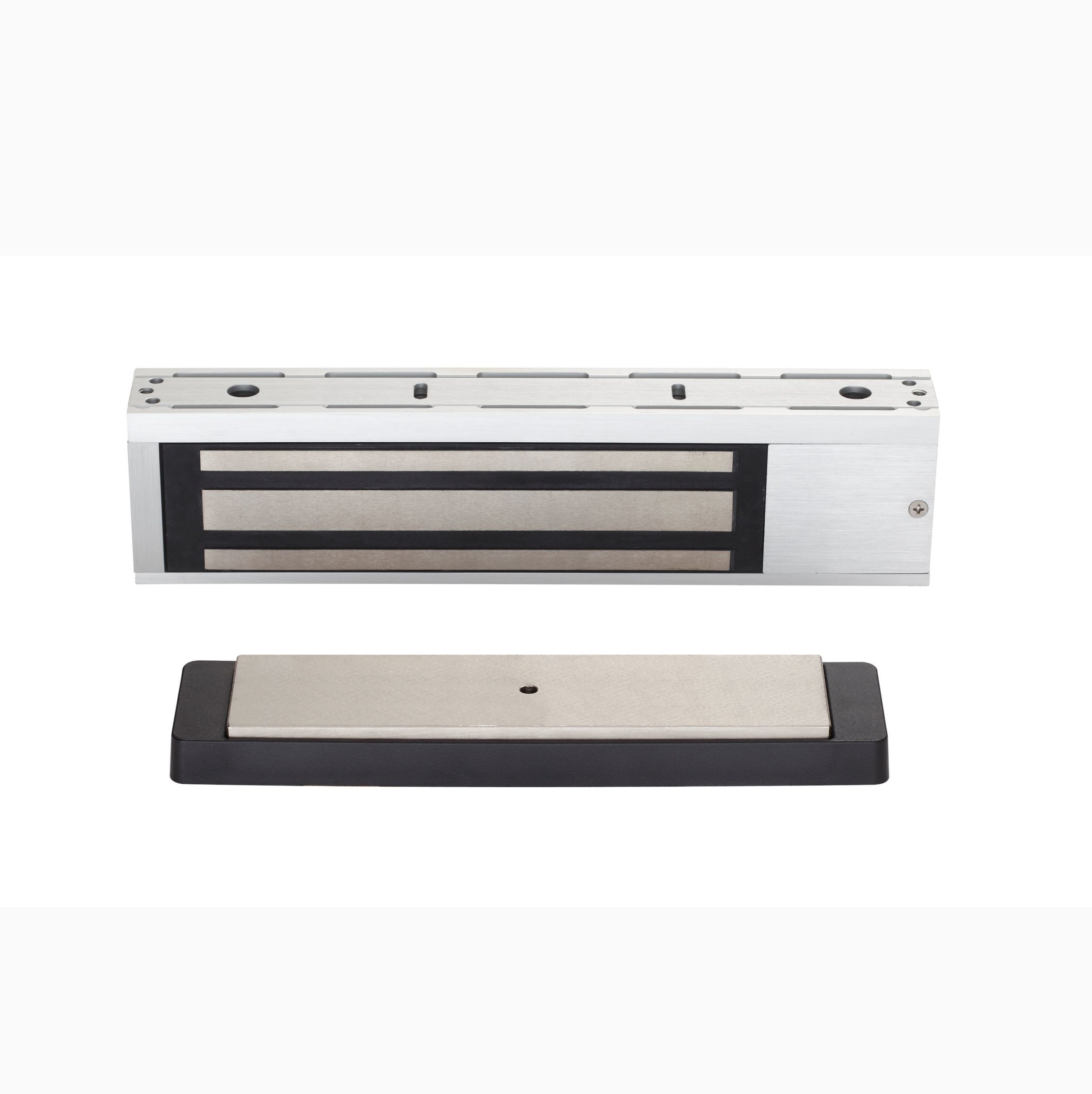

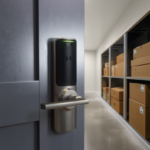


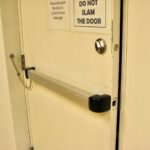
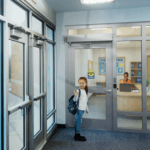
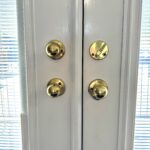
Leave A Comment